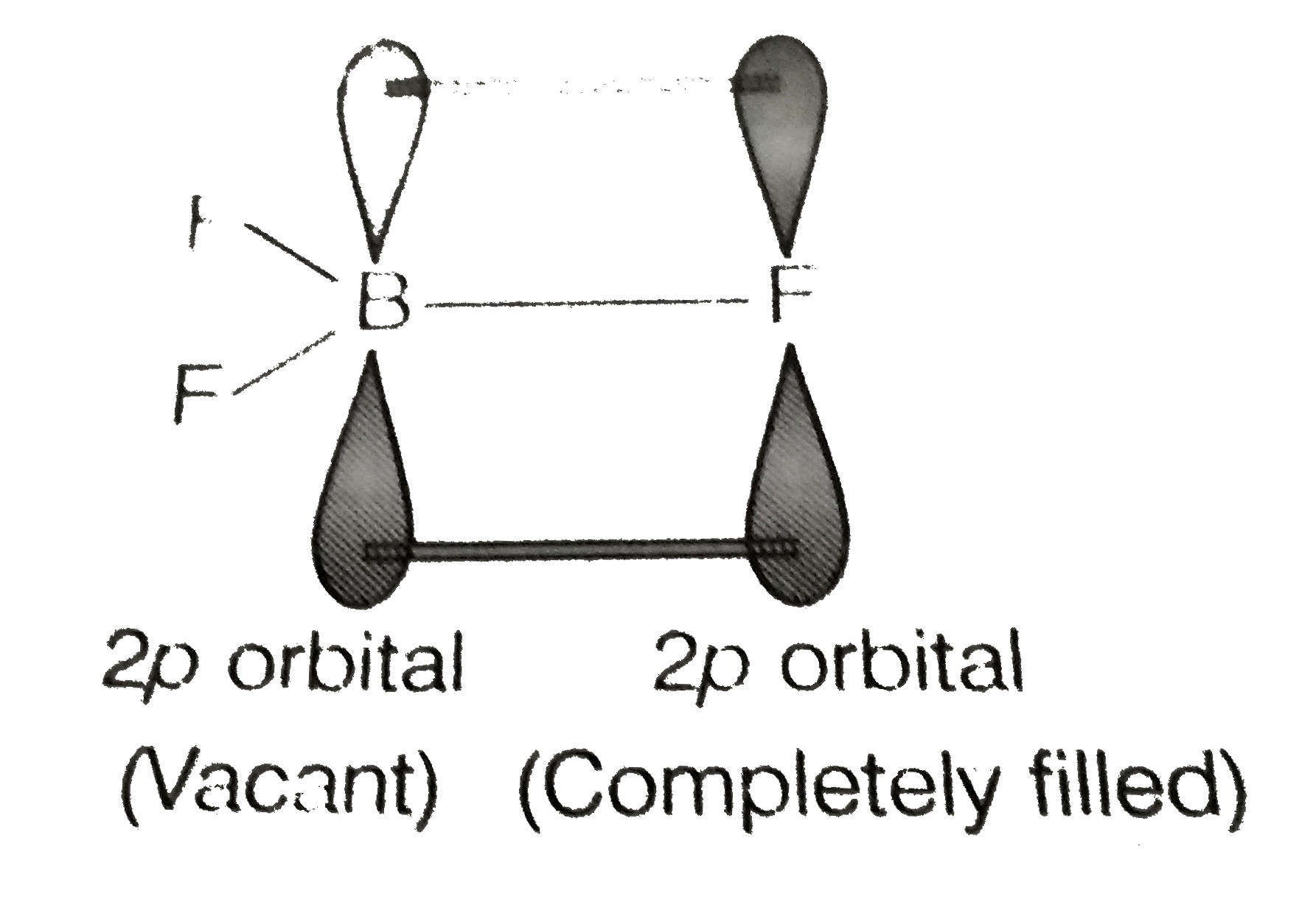Account for the following observations
(a) AlCl3 is a Lewis acid
(b) Though fluorine is more electronegative than chlorine yet BF3 is a weaker Lewis acid than CI3
(c) PbO2 is a stronger oxidising agent than SnO2
(d) The +1 oxidation state of thallium is more stable than its +3 state.
(a) In AlCl3,Al has only six electron in its valence shell. It is an electron deficient species. Therefore, it acts as a Lewis acid (electron acceptor)
(b) In BF3 boron has a vacant 2p-orbital and fluorine has one 2p-completely filled unutilised orbital. Both of these orbitals belong to same energy level therefore, they can overlap efficitively and form pπ−pπ bond. This type of bond formation is known as back bonding.
While back bonding is not possible in BCl3, because there is no effective overlapping between 2p-orbital of boron and 3p-orbital of chlorine. Therefore, electron deficiency of B is higher in BCl3 than that of BF3. That's why BF3 is a weaker Lewis acid than BCl3

(c) In PbO2andSnO2, both lead and tin are present in +4 oxidation state. But due to stronger inert pair effect, Pb2+ ion is more stable than Sn2+ ion. In other words, Pb4+ ions i.e., PbO4 is more easily reduced to Pb2+ ions than Sn4+ ions reduced to Sn2+ ions. Thus, PbO2 acts as a stronger oxidising agent than SnO2
(d) Tl+ is more stable than Tl3+ because of inert pair effect.
Topper's Solved these Questions
- THE P-BLOCK ELEMENTSBOOK - NCERT EXEMPLARCHAPTER - THE P-BLOCK ELEMENTSEXERCISE - Assertion and Reason
2 Videos
- STRUCTURE OF ATOMBOOK - NCERT EXEMPLARCHAPTER - STRUCTURE OF ATOMEXERCISE - All Questions
53 Videos
- THE S-BLOCK ELEMENTS BOOK - NCERT EXEMPLARCHAPTER - THE S-BLOCK ELEMENTS EXERCISE - Long Answer Type Questions
8 Videos
Similar Questions
Account for the following observations
(a) AlCl3 is a Lewis acid
(b) Though fluorine is more electronegative than chlorine yet BF3 is a weaker Lewis acid than CI3
(c) PbO2 is a stronger oxidising agent than SnO2
(d) The +1 oxidation state of thallium is more stable than its +3 state.
View SolutionAccount for the following observation:
(i) AlCl3 is Lewis acid
(ii) Though fluorine is more electronegative than chlorine yet BF3 is a weaker Lewis acid than BCl3
(iii) PbO2 is a stronger oxidising agent thatn SnO2
(iv) The +1 oxidation state of thallium is more stable than its +3state.
View Solution
Knowledge Check
The +1 oxidation state of thallium is more stable than its +3 oxidation state because of
Aits atomic sizeBits ionization potentialCinert pair effectDdiagonal relationshipAssertion: BF3 is weaker lewisi acid than BCl3.
Reason: BF3 is less electron deficient thann BCl3.AIf both (A) and (R) are true and (R) is the correct explanation of (A)Bif both (A) and (R) are true but (R) is not correct explanation of (A)CIf (A) is true but (R) is falseDIf (A) is false but (R) is false
Explain why BF3 is a weaker Lewis acid than BCl3.
View SolutionState whether the statement is true or false.BF3 is stronger Lewis acid than BCl3.
View SolutionTlCl3 is more stable than TlCl.
+1 oxidation state of thallium us more stable than +3.
View SolutionWhy is+2oxidiation state of lead more stable than +4 oxidation state?
View SolutionWhy BBr3 is a stronger Lewis acid as compared to BF3 through florine is more electronegative than bromine ?
View SolutionWhy is+2oxidiation state of lead more stable than +4 oxidation state?
View Solution
